We went up to Apedale in the morning – it was quite sunny and fairly warm, although it had been very rainy overnight.
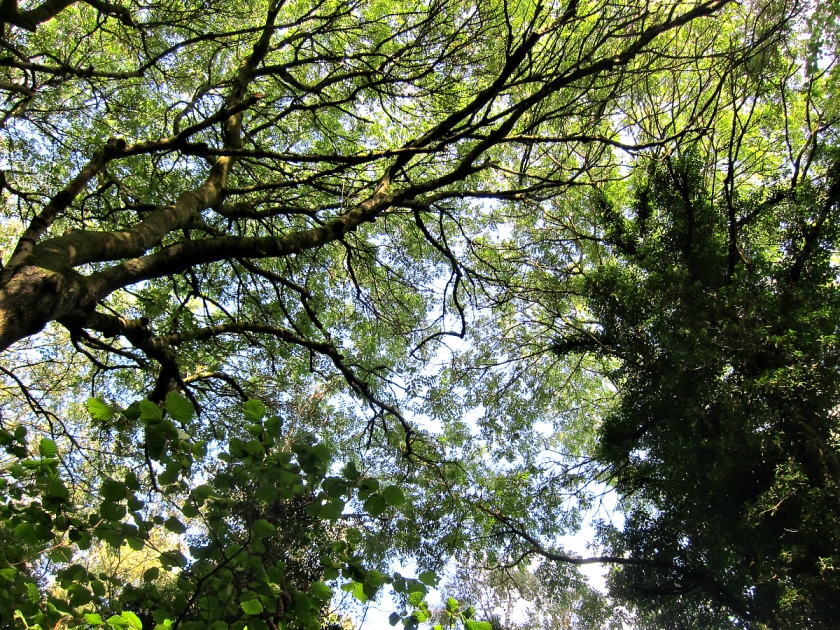
The moon was very bright and easy to see against the beautiful blue sky:
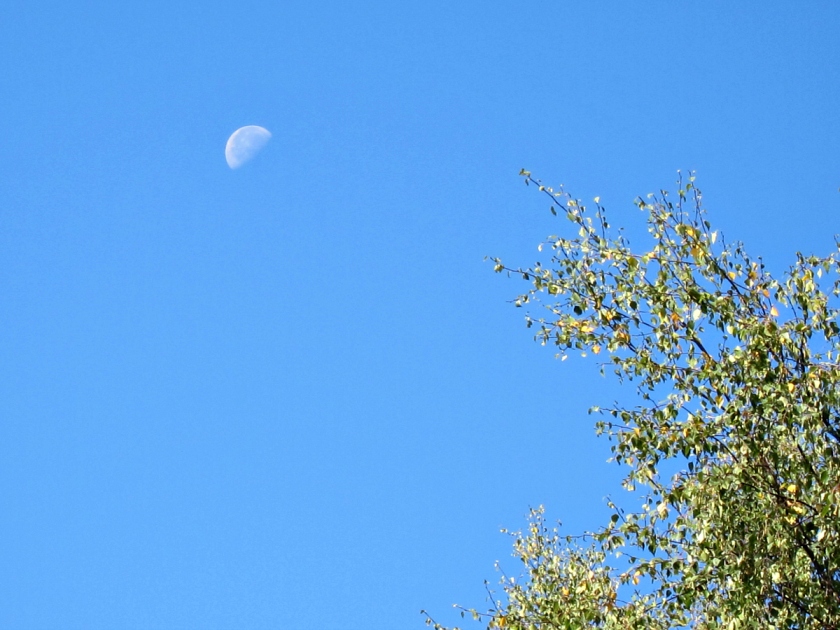
We have been noticing all the different galls on the oak trees, especially since we saw the TV programme about them. It seems that it is a very good year for gall wasps, but maybe not for oak trees!
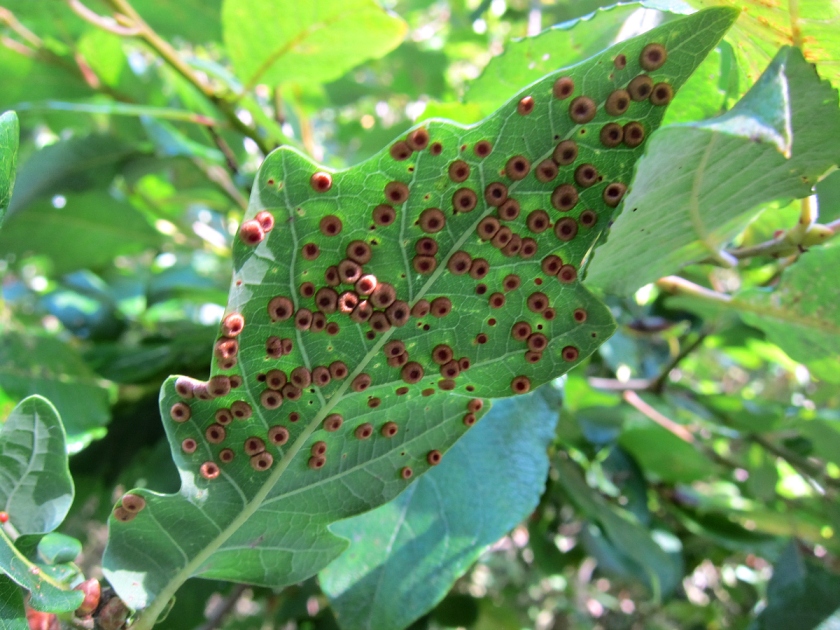


There aren’t so many flowers left for hoverflies – this might be why they were all crowded onto this flower head:

In Northern Europe the Red Admiral is one of the last butterflies to still be seen before the cold of autumn really sets in. This one was enjoying the sun on a bramble leaf:
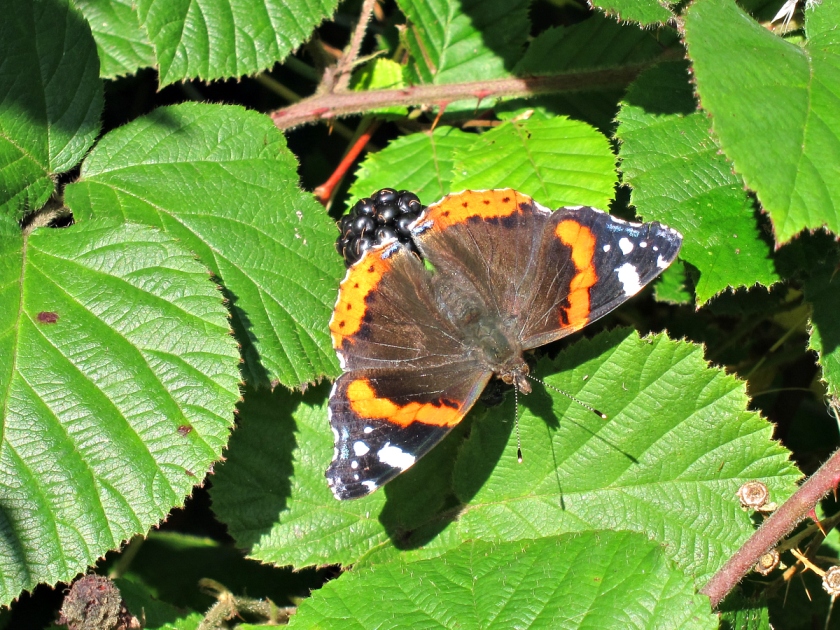
This specked wood butterfly was also out and about – this one was resting on an alder leaf, quite high up in a tree. Apparently this is what they do when they are defending their territory:

The brambles were also a good place for these baby snails:
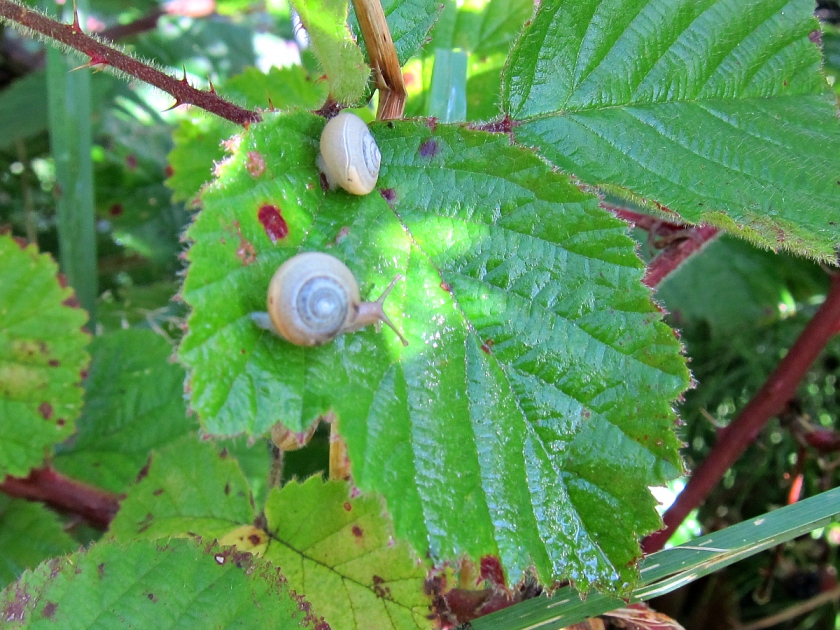
and finally, also on the bramble leaves, we spotted these two:

The shield bug is a spiked shield bug (Picromerus bidens), you can just see the spikes on either side of the pronotum. This shield bug is very predatory and likes to eat the caterpillars of other insects. There’s also a seven spot ladybird – which is probably getting ready to hibernate in October.
